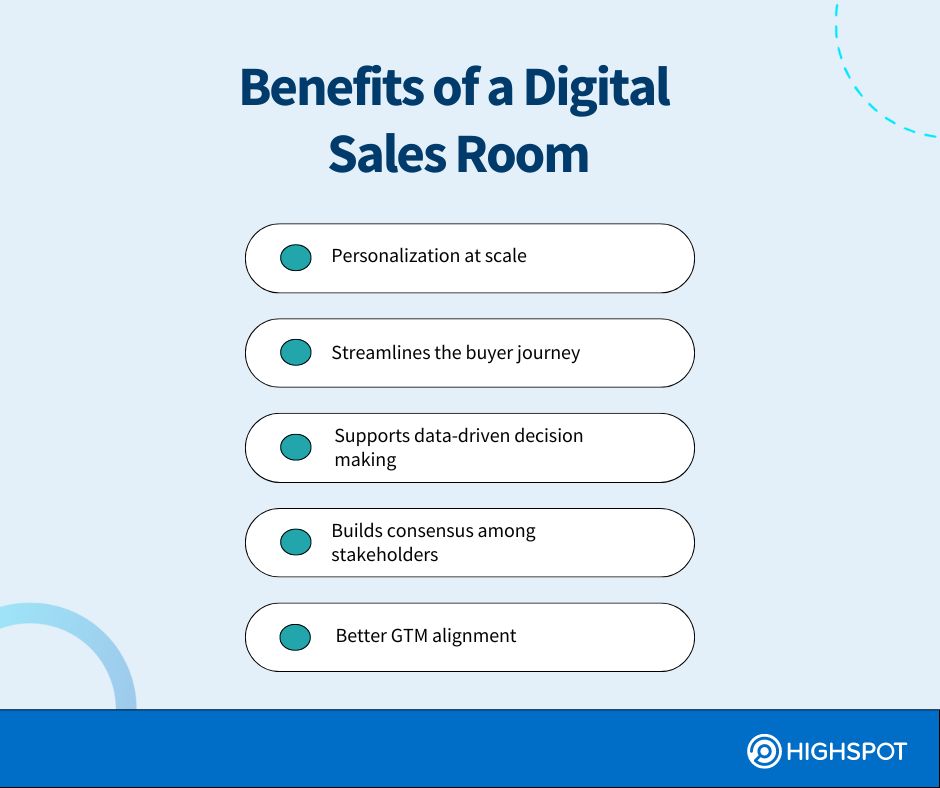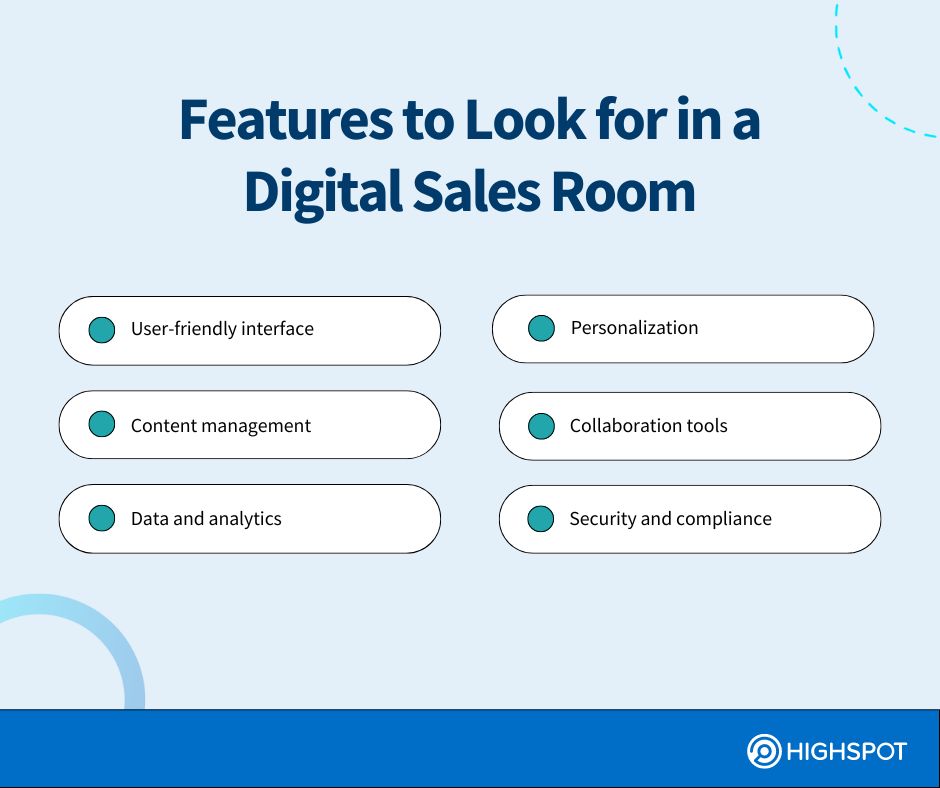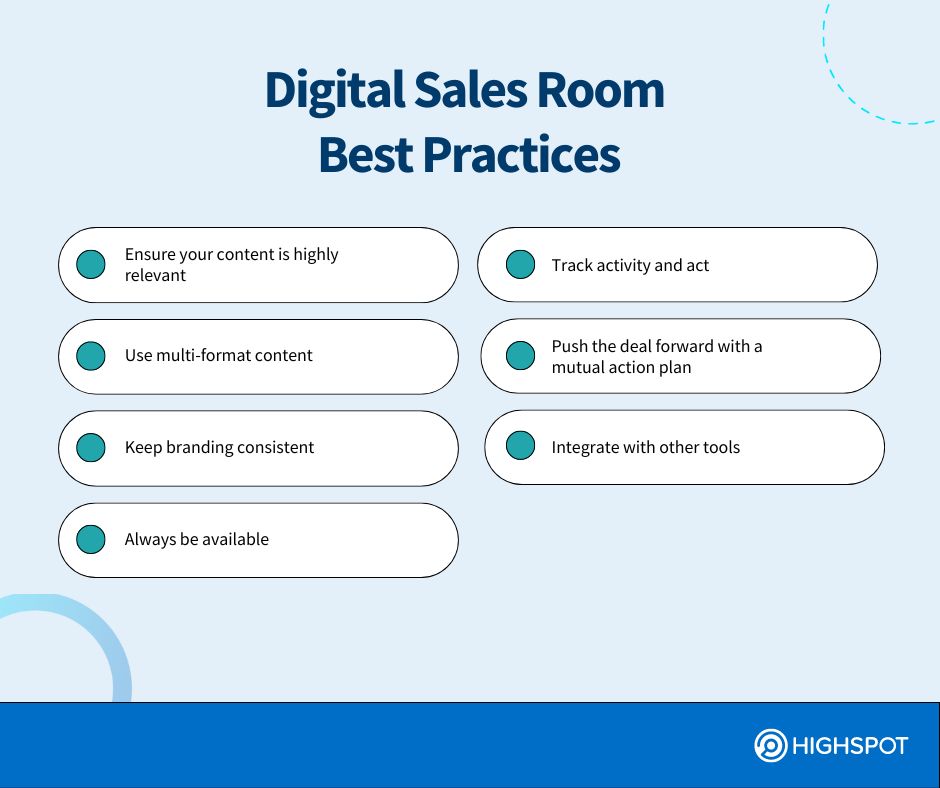Key Takeaways
- According to Gartner, 80% of interactions between B2B buyers and suppliers will take place through digital channels, making digital sales rooms more important than ever.
- A digital sales room allows buyers and sellers to team up and work toward the shared goal of closing a deal.
- 50% of B2B sales technology will include digital sales rooms by 2025, making them an essential tool to meet evolving buyer expectations and drive more effective sales engagements.
B2B buyers no longer follow a predictable, linear path. They hop between channels to gather information about you, your product, and your competitors, allowing them to take full control of their buying process. With so much detailed information online, they dedicate only 17% of their buying journey to talking to potential suppliers. On average, it takes 8-10 touchpoints before they will even take your call.
When buyers finally connect with sales reps, they’re not just looking for a general overview or a product demo—they want answers to their specific problems. This shift has made personalisation a crucial part of the sales process, and that’s where digital sales rooms come into play.
Read on to learn how your sales team can use digital sales rooms to create unique buyer experiences, move deals faster, and improve win rates.
What Is a Digital Sales Room (DSR)?
A digital sales room (DSR), also known as a dealroom or virtual sales room, is a secure, centralised microsite where sales professionals can engage, collaborate, and share valuable information with customers. It’s a personalised space that allows sellers to deliver meaningful interactions based on buyer needs and preferences.
With a digital sales room, buyers can easily find sales content, helping them make informed decisions faster. Meanwhile, sellers can keep the conversation going and gain actionable insights into buyer behaviour, including the effectiveness of sales collaterals and any proposal updates. It serves as a single source of truth throughout the deal cycle, making it easier for sellers and buyers to navigate the sales journey together.
How Does a Digital Sales Room Work?
With buyers interacting on several platforms, it’s crucial to have a dedicated space for communication and relevant content. A digital sales room does just that and more.
Sales reps can easily create a customised room or quickly modify existing templates for each buyer. Buyers can access this space through a secure login.
Sellers can upload and organise sales collaterals in various formats, from whitepapers and demo videos to proposals and pricing documents, so buyers can access them when they need them most. They can also track how buyers engage with content in real time, so they can identify what’s working and tailor their approach accordingly.
On top of that, buyers and sellers can maintain open lines of communication through live chat and commenting features. Buyers can invite stakeholders through a shareable link to push the deal forward.
The best digital sales rooms come equipped with real-time analytics, communication tools, CRM, and sales enablement technology, all designed to simplify and enhance the sales experience.
Benefits of a Digital Sales Room
With 75% of B2B buyers preferring remote, rep-free sales interactions, traditional in-person meetings are becoming less common. Digital sales rooms allow buyers to guide their journey while offering the salespeople flexibility to step in only when the buyer is ready to engage.
Creating a simple deal room for prospects to browse as they desire brings many unexpected benefits, including:

Personalisation at Scale
Digital sales rooms enable sales teams to customise content based on the buyer’s interests and specific needs, improving engagement. For example, only including case studies from their industry or a video demo of how similar companies use the product keeps irrelevant content at bay. This personalised buying experience increases the likelihood of conversion by ensuring buyers receive the right information at the right time.
When customers find the information they receive to be high-quality, they are 26% more likely to make the purchase all sales reps covet: a high-quality, low-regret deal.
The interactive nature of a DSR also keeps buyers more involved, making follow-ups easier and more relevant.
Streamlines the Buyer Journey
Buyers often repeatedly loop back to the same content throughout the sales process. A digital sales room simplifies this by creating a centralised workspace where all the necessary information can be accessed at any time. This reduces back-and-forth emails to ask for interesting content and, ultimately, speeds up the decision-making process.
Supports Data-Driven Decision Making
Digital sales rooms offer detailed analytics about buyer behaviour, empowering sales teams to make decisions that better serve potential customers. Sellers can see which content resonates most with buyers and adjust their approach.
Builds Consensus Among Stakeholders
With an average of 8 to 11 stakeholders involved in B2B purchasing decisions, aligning everyone’s interests can be challenging. A digital sales room eliminates this bottleneck by providing a single source of information, ensuring that all decision-makers are on the same page and have access to the materials and information their colleagues are seeing.
Better GTM Alignment
Aligning revenue-generating and customer-facing teams is critical for a cohesive go-to-market (GTM) strategy. Digital sales rooms help ensure all teams are aware of the message being delivered to a particular customer. They also encourage consistent branding and value propositions.
Key Features to Look for in a Digital Sales Room Software
Digital sales rooms offer a range of functionality that make them a powerful addition to other sales tools. These features streamline the sales process, enhance sales productivity, and deepen engagement with prospects and customers.
Below are the features that make a DSR necessary for today’s buyers:

- User-friendly interface: A digital sales room should feel intuitive to both buyers and sellers. Imagine opening a website where everything is clearly laid out, buttons are easy to find, and the flow feels natural. For example, a simple drag-and-drop menu for uploading new sales collateral makes the seller’s job easier, while buyers can easily locate materials without hunting through layers of menus.
- Content management: A DSR must support multiple content formats, including documents, videos, images, interactive presentations, and product demos. It should also make it easier for sales reps to organise, share, and update content.
- Data and analytics: A digital sales room should provide engagement metrics data to see how buyers are interacting with the materials you share. Knowing what content gets the most attention and where buyers spend their time helps you tailor your follow-ups and close deals faster.
- Personalisation: You want to make your prospects’ experience feel personal. Besides being branded, a good digital sales room should allow you to create unique portals for each buyer, tailor presentations, and share content that matches their needs, interests, and industry.
- Collaboration Tools: Having live chat or video conferencing within the DSR means you can answer questions as they arise. You also need the ability to collaborate on documents in real time, so stakeholders can easily review contracts or presentations and provide e-signatures when needed.
- Security and compliance: Security is paramount, especially when dealing with sensitive data like contracts or financial details. DSRs should offer encrypted logins, role-based access, and compliance features like audit trails to ensure everything stays secure and compliant with regulations.
Digital Sales Room Best Practices
Implementing a well-designed digital sales room can help address the common deal breakers in B2B sales, such as pricing mismatches, confusing information, and low-quality presentations. By delivering clear, accurate content that aligns with buyer expectations, a DSR can significantly boost sales performance.

1. Ensure Your Content is Highly Relevant
The B2B buying journey includes six stages: awareness, consideration, evaluation, decision, onboarding, and renewal. Sellers can make the most impact by providing content and support at the stage the buyer is in.
For example, if a prospect is watching product demos, they are likely in the evaluation stage. Use that as an opportunity to provide even more targeted information, like use cases or comparison charts, to help them move forward. Meanwhile, if a prospect keeps revisiting a specific customer success story, your sales team could follow up with additional information on that customer’s solution, perhaps recommending a reference call.
2. Use Multi-Format Content
Different buyers prefer different types of content, so it’s important to offer variety. Multi-format content caters to various learning styles and helps convey your message more effectively, boosting engagement. Include short explainer videos and interactive product tours for quick insights, along with downloadable whitepapers for those who prefer in-depth reading. This way, your DSR becomes a resource hub that appeals to all types of decision-makers.
3. Keep Branding Consistent
Consistent branding within your digital sales room builds trust and recognition. Ensure your logos, colours, fonts, and messaging are uniform across all content. This not only strengthens your brand presence but also creates a cohesive customer experience.
4. Always Be Available
Your digital sales room is an extension of your sales team, so it needs to be accessible at all times. Buyers should be able to view the sales materials whenever they want, and reps should be ready to engage when questions arise. Ensure your digital sales room is available 24/7, whether through real-time notifications, live chat, scheduled meetings, or quick follow-ups. You may also consider integrating AI assistants to provide support immediately.
5. Track Activity and Act
Tracking how your buyers interact with the content gives you valuable insights into what’s working and what’s not. For instance, if one stakeholder spends a lot of time on your pricing sheet but skips over case studies, it signals they’re ready to discuss numbers but don’t need further proof points. This lets you follow up in a targeted, meaningful, and timely way.
6. Push the Deal Forward with a Mutual Action Plan
Work with buyers to create a mutual action plan (MAP) that clearly outlines the next steps, timelines, and responsibilities. The MAP alone will build trust and accountability and give your prospects something to rely on. To further this, use the digital sales room to collaborate based on this plan, allowing the buyer to create tasks for you to complete when they need materials, pricing, or answers to questions from other stakeholders. This drives deal momentum all in one place.
7. Integrate With Other Tools
Your DSR should streamline your workflows and integrate well with your existing tools, like your CRM and marketing automation software, to automatically track buyer engagement within your sales pipeline. This way, when a buyer reviews content, the next step triggers. It keeps your sales and marketing teams in sync so nothing slips through the cracks.
Digital sales rooms transform how sales reps engage with buyers, build meaningful relationships, and move the deal forward. While they won’t fully replace in-person meetings or phone calls, they complement them by giving buyers quick access to the information they need, all in one place. They are designed to integrate with your existing tools and are often powered by AI.
Since 55% of B2B buyers say they encounter an overwhelming amount of information during the purchase process, digital sales rooms from Highspot can simplify the buyer experience.
Learn more with a Highspot demo today!




